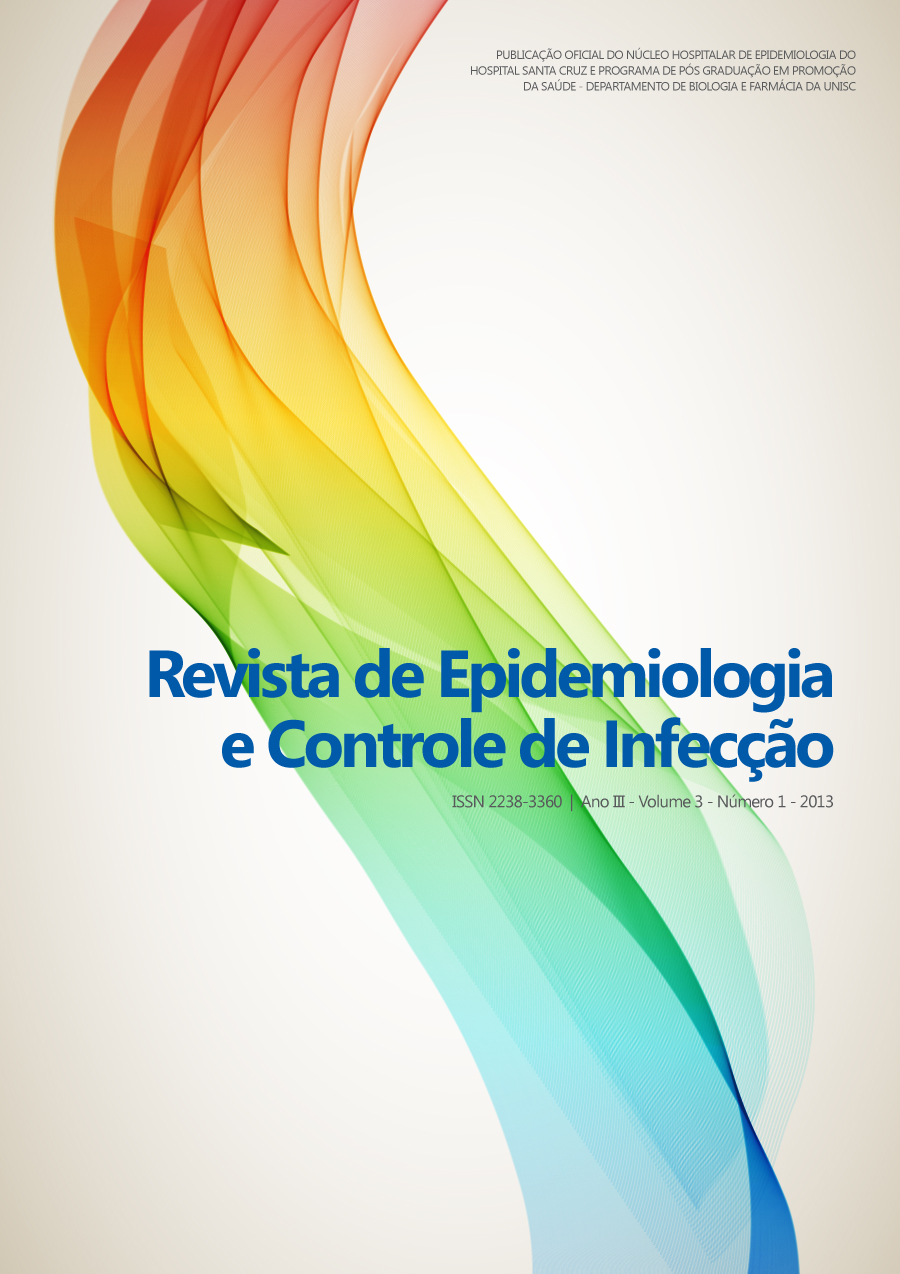Intensive care unit audit: invasive procedure surveillance
DOI:
https://doi.org/10.17058/reci.v3i1.2741Abstract
Rationale and objective: currently, Healthcare-associated Infections (HAIs) constitute a serious public health problem. It is estimated that for every ten hospitalized patients, one will have infection after admission, generating high costs resulting from increased length of hospitalization, additional diagnostic and therapeutic interventions. The intensive care unit (ICU), due to its characteristics, is one of the most complex units of the hospital environment, a result of the equipment, the available technology, the severity of inpatients and the invasive procedures the latter are submitted to. The aim of the study was to evaluate the adherence to specifi c HAI prevention measures in invasive ICU procedures. Methods: This study had a quantitative, descriptive and exploratory approach. Among the risk factors for HAIs are the presence of central venous access, indwelling vesical catheter and mechanical ventilation, and, therefore, the indicators were calculated for patients undergoing these invasive procedures, through a questionnaire standardized by the Hospital Infection Control Commission (HICC). Results: For every 1,000 patients, 15 had catheter-related bloodstream infection, 6.85 had urinary tract infection associated with indwelling catheter in the fi rst half of 2010. Conclusion: most HAIs cannot be prevented, for reasons inherent to invasive procedures and the patients. However, their incidence can be reduced and controlled. The implementation of preventive measures based on scientifi c evidence can reduce HAIs signifi cantly and sustainably, resulting in safer health care services and reduced costs. The main means of prevention include the cleaning of hands, use of epidemiological block measures, when necessary, and specifi c care for each infection site. KEYWORDS Nosocomial infection. Intensive care units.Downloads
Downloads
Published
How to Cite
Issue
Section
License
The author must state that the paper is original (has not been published previously), not infringing any copyright or other ownership right involving third parties. Once the paper is submitted, the Journal reserves the right to make normative changes, such as spelling and grammar, in order to maintain the language standard, but respecting the author’s style. The published papers become ownership of RECI, considering that all the opinions expressed by the authors are their responsibility. Because we are an open access journal, we allow free use of articles in educational and scientific applications provided the source is cited under the Creative Commons CC-BY license.


